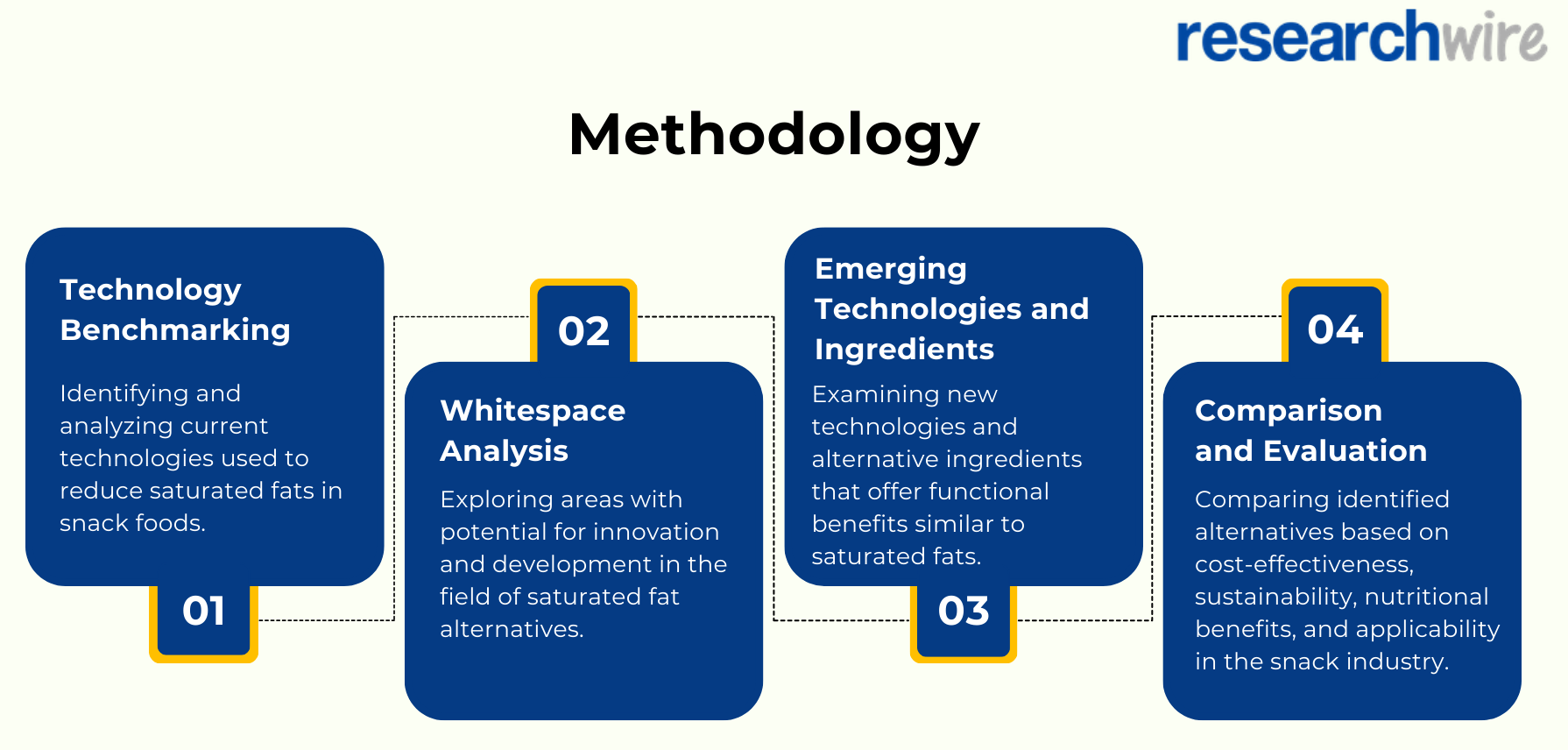Technology Intelligence and Whitespace Analysis on Saturated Fat Alternatives
Introduction
Saturated fats, commonly found in various snack foods, have been linked to adverse health effects such as increased risk of high cholesterol and heart disease. The market is increasingly targeting healthier alternatives that maintain the desired functionality and taste while offering sustainability and improved nutritional benefits. This whitepaper presents an analysis of the current technology landscape and whitespace opportunities in the domain of saturated fat reduction in snack applications.
Context and Background
Saturated fats are saturated with hydrogen molecules and contain only single bonds between carbon molecules. They are present in savoury snacks, bakery products, ready-to-eat foods, and dairy products. The caloric value of saturated fats is significant, with 1 gram equating to 9 calories. Reducing the intake of saturated fats is essential due to their link to high cholesterol and heart disease.
Need for Alternatives
The food industry is focused on finding alternatives to saturated fats that do not compromise on functionality or taste. These alternatives should offer the same benefits while being healthier and more sustainable.
ResearchWire’s Approach

Findings
Current Alternatives and Technologies
- Ingredients Based on Functionality:
- Chickpea Aquafaba (CA) Emulsion: This can be a suitable alternative to palm oil and can be used for emulsification, foaming, and texture on various bakery products and vegan dairy substitutes. Emulsions are prepared using Canola oil as oil phase and CA as an aqueous phase.
- Modified Cassava Starch: This can be a potential economical alternative to Fat (or vegetable butter) and offers texture and flavor, used in dry bakery products (e.g. crackers), reducing overall fat content by 49.51%.
- Konjac Glucomannan: This can be a potential alternative to fats in dairy products. Have properties like storage, pH Stability, and gelling characteristics. Provides nutritional benefits like Anti-obesity and anti-hyperglycaemic properties when used in low-fat dairy products (e.g. Skimmed Yoghurt).
- Mushroom Polysaccharide Extract: This can be a potential alternative fat for meat products. Provides enhanced moisture barrier and texture to meat patties, offering nutritional benefits like high protein content and low fat.
- Emerging Technologies:
- Microbial Fermentation: Produces beneficial fatty acids and antioxidants.
- Cell-cultured Fat: Used in meat products to simulate traditional fats.
- Oleogels: Structured fat systems replacing harmful fats in frying and food processing.
- Novel Compositions:
- Fat-free and Low-fat Compositions: Utilizing ingredients like chitosan, organic acids, soybean protein, and emulsifiers to mimic fat properties in various applications.
Patents and Research
- Sample Patent 1: Oil-in-water compound gel for sausage fat substitute using sodium alginate, flaxseed gum, and soybean oil.
- Sample Patent 2: Semi-processed fatty product free of saturated fats, using non-hydrogenated vegetable oils and vegetable proteins.
Exemplary Products
- FaTRIX by Gavan Technologies: High-performance protein-based fat substitutes for bakery, ice cream, meat, and chocolate applications.
- Go!Drop by Cubiq Foods: Emulsion of vegetable oils and water, used in plant-based meat alternatives, offering reduced fat content and improved nutrition.
Conclusion
The food industry is making significant strides in developing alternatives to saturated fats that do not compromise on taste, functionality, or sustainability. Innovations in ingredients and technologies provide promising solutions that align with consumer preferences for healthier and more sustainable food options. Continued research and development in this field are crucial for advancing these alternatives and addressing the challenges associated with saturated fat reduction in snack foods.
For further details and to access the complete report, please contact Researchwire.




